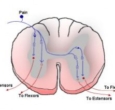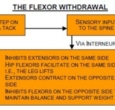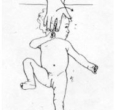About thebook
Dr. Michael Allen has been in private clinical practice since 1977. He is both a Doctor of Chiropractic and a Naturopathic Medical Doctor (in Arizona). Dr. Allen has authored two books related to brain function: "What Your Brain Might Say if It Could Speak", which was written for patients and doctors, and "Receptor Based Solutions™; Functional Neurology Every Doctor Should Know", for doctors. He holds Diplomate status in five different specialties, one each from: the American Board of Chiropractic Neurology (DABCN), the American Association of Integrative Medicine (DAAIM), the Chiropractic Board of Clinical Nutrition (DCBCN), the American Academy of Pain Management (DAAPM), and the International Board of Applied Kinesiology (DIBAK), and he was awarded a Fellowship from the American College of Functional Neurology (FACFN). He has been practicing functional neurology in Orange County, California since 1991.Is All Exercise Healthy? A new approach shows promise

by Michael D. Allen, DC, NMD Functional Neurologist Is this you? Do you feel good after your cardiovascular exercise? Upon exertion, does your heart rate jump to your target rate quickly? Do you sometimes go beyond your target rate just to work a bit harder? Does your heart rate get up to 150-160 beats per […]
Nothing is Good About Bad Posture

by Michael D. Allen, DC, NMD Functional Neurologist Virtually every musculoskeletal complaint can be linked to bad posture, and good posture is more than standing up straight. A healthy posture has to do with muscles and how they work together to keep you upright and move against gravity. Standing and moving about on two feet […]
Why Do I Have Digestive Problems?

by Michael D. Allen, DC, NMD Functional Neurologist Your digestive problems probably relate to a one-way valve located between your large and small intestine called your ileocecal valve (ICV). It is a sphincter valve that is designed to allow the contents of the small intestine to pass into your large intestine but to stop its […]
What Makes a Heart Healthy?

by Michael D. Allen, DC, NMD Functional Neurologist The Cardiac Copycat I just treated a retired sheriff. She had a history of heart valve problems and tachycardia (fast heartbeat) so her MD told her to have an ablation (where the doctor burns out part of her heart’s electrical system). As an alternative she was given […]
Why Synchronize Brain Function?

by Michael D. Allen, DC, NMD Functional Neurologist Psychologists have observed that people with learning disabilities process input from their environment differently than those with more “neuro-typical” brains. Many people with learning difficulties just think differently. Giving a person with learning difficulties complicated directions often dooms them to failure. More words require a longer attention […]
Galant Reflex: The Postural Response to Stroking the Lumbar Flank
- Apr, 23, 2015
- thebook+
- Reflexes
- Comments Off on Galant Reflex: The Postural Response to Stroking the Lumbar Flank

The Galant reflex (or Galant’s infantile reflex, named after the Russian neurologist Johann Susman Galant) is commonly observed in newborns and is said to fade between the ages of four and six months. It helps rule out brain damage at birth. Elicit Galant’s reflex by holding the newborn in a face down posture or laying them […]
The Importance of Reciprocity to Human Performance

The Crossed Extensor Reflex (CER; also known as the crossed cord reflex) is a protective response that apparently begins at about the 28th week of gestation and is functionally integrated one to two month after delivery. It is functionally significant in back-and-forth (or reciprocal) muscle actions. Its dysfunction can interfere with activities like running and […]
Physiological Significance of the Protective Response
- Feb, 06, 2015
- thebook+
- Reflexes
- Comments Off on Physiological Significance of the Protective Response

The Idea: Human physiological reflexes have a predictable display. Either they work according to their original design or they are pathological. There are no other choices. If a reflex displays itself in ways other than according to its preprogrammed format, it must be considered to be pathological, and it increases the risk of injury. Reflex […]
Functional Display of the Deep Tendon Reflex

Striking a tendon has an almost instant display. A quick stretch to the patellar tendon, for xample, should register with an involuntary jerk of the knee; the foot kicks. This “knee jerk” deep tendon reflex (DTR) test is a common part of even the most basic neurological exam. It assesses the functional integrity of the […]
Taking Up The Fencing Posture

The neck receptors give rise to a primitive reflex—the Tonic Neck Reflex (TNR)—found in newborn humans. Books say that the TNR normally vanishes by the child’s first birthday, but that appears to be functionally and demonstrably untrue. The TNR persists throughout life and is a fundamental tool for neurological examination. The TNR is fundamental to […]



